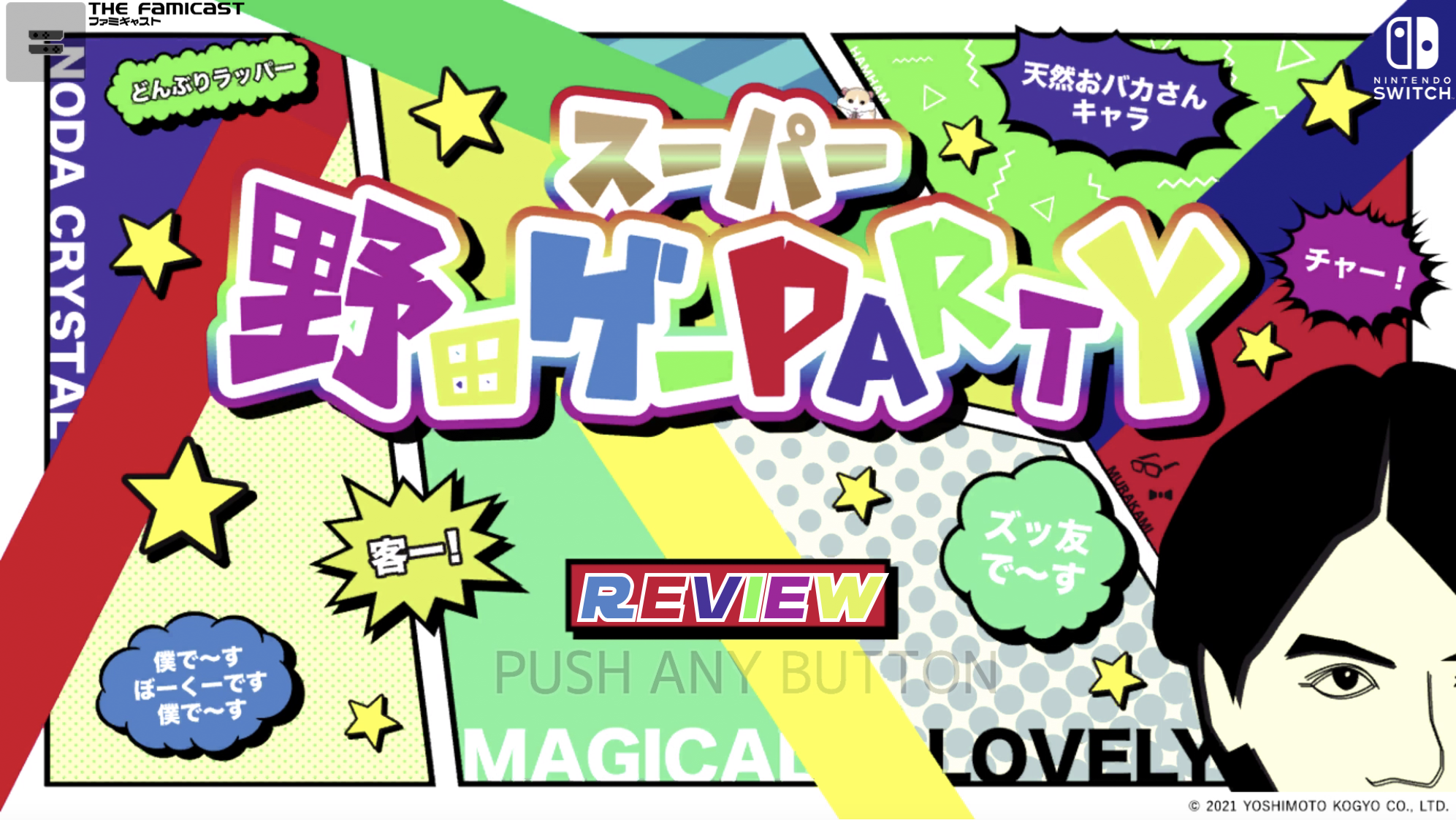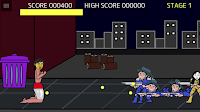Super Nodage Party is one of those games that really calls back to the wacky Japanese games of yesteryear. Some of you may be too young to remember, but at the time, many Japanese developers were making experimental and/or just flat out crazy games with varying degrees of success. Although these days bigger studios don’t take many risks, indie developers have definitely picked up the slack. For Super Nodage PARTY to happen, all it took was one Japanese comedian with some crazy ideas and a publisher willing to embrace the insanity. In this review, we’re going to tell you what went in to making this game a reality, the games themselves and if it’s worth picking up even if you don’t know the language. Let’s dive in.
Background
Super Nodage Party is made up of 16 different party / mini-games. While some of them are fairly simple in scope, others provide a more traditional gameplay arch. Before we get into this collection of games, I think it’s interesting to take a look at a little backstory here. The idea behind Super Nodage Party is the brainchild of Japanese comedian Hikaru “Crystal” Noda. After a successful crowdfunding campaign, Noda managed to raise 339% of his funding goal, originally asking for ¥4,000,000 (about $37,000 USD), fans destroyed the goal, donating around ¥13.5 million ($124,000 USD).
Initially, Noda was only halfway serious when he first spoke of making the game, but once it was a reality, he got to work. Noda partnered with Hiroyuki Goto, an ex-Bandai Namco employee who was responsible for the Japanese puzzle series, “Kotoba no Puzzle: Mojipittan. Together, they worked with Yoshimoto Games to bring the game to the Switch. This isn’t their first time working with Noda, either. They have worked on titles with him that appeared on smart devices as well as with other Japanese comedians pursing similar projects.
Games
Like I mentioned previously, there are 16 games on offer in the package (with two more on the way at some point in the future) each varying in depth and gameplay. If you want a FULL list of all of the available games, I would suggest checking out my English Guide, which not only outlines everything that’s included in the package, but it also lets you know how to play everything.
All of the games on offer here feature very simple, and some might even say, sloppy/amateur artwork. Gameplay itself ranges from simple to slightly complicated. Some of the more simple games include:
Tsurikawa - You are tasked with trying to keep a crudely animated version of Noda on his feet on a moving and stopping train for as long as you can.
Marshmallow Ikura Yakeru Kana - You try to roast a marshmallow (with the press of a button) in the fireplace while grandma isn’t looking. If she spots you before you finish roasting, you lose.
Super Block Kuzushite - A Breakout clone where you don’t control the paddle at the bottom of the screen, but rather the head of Japanese comedian Dekka-chan and try to avoid getting hit by the ball.
Gals Fighter Ouen - Select your fighter and then they duke it out. Here, you don’t control the fighters themselves, but rather an onlooker who is cheering (the meaning of “ouen”) them on and throwing items into the stage by rapidly pressing a button that can help or hinder the fighters.
More complicated games include:
Futomomo ga Tetsu no Yō ni Katai Otoko Tetsuji - You are in control of a man with rock hard thighs in a beat-em-up kind of game. You can jump, move around and deflect projectiles from gun wielding enemies as they hit your thighs. There are power-ups and multiple levels to go through here.
Onion Quest - An obvious nod to Dragon Quest, this is an RPG complete with a party of characters, random battles, leveling up and a way to save your progress.
Hayaoshi Quiz - Control a character through a maze to reach a button. Once you press the button, you have to answer the question that has been scrolling across the bottom of the screen. Questions are all in Japanese (with the exception of a few math related problems) and change every 15 seconds, so you need to know some Japanese here.
Tsugi Orimasu Hayaoshi Bus - You’re riding a bus and need to get off at a specific stop. This is shown at the top of the screen, while the next stop scrolling across the bottom. You only need to press a button on the controller, but you’ll also need to be able to read Japanese. You need to hit three right presses to win.
These were all my favorites to play, with Tsurikawa and the hard thigh game being my favorites of the package. I should note, that the rules do change somewhat for some of the games when playing in one player mode. Generally speaking, the competitive games change to something time based or based on high scores by performing well as long as possible before being knocked out by the CPUT.
Everything here looks rough from a visual perspective, but it’s all done in a very deliberate way. The games here are fun enough, but the best way to enjoy them is to play with other friends. Not all of the games feature multiplayer (the rock hard thigh game and Onion Quest for example), and they can be fun, but ultimately won’t keep you busy for too terribly long. Party settings are where this game will shine.
As a bit of a bonus, playing the games nets you crystals. These crystals can be used in a in a “Noda Gatcha” machine which contain a variety of collectibles from the game, namely artwork, music and voice samples. You can view your collection and even see your personal high scores. These kind of things MIGHT keep players engaged for a long period of time, but for me, it wasn’t really a draw to constantly come back.
Chances of a Western Release & Note on Japanese
Given the popularity of Nodage PARTY in Japan, I could see a smaller publisher taking a risk and putting this game out in the West. I think there is a market for something like this, especially for gamers who have a soft spot for oddball Japanese games. As things stand right now, while gameplay is fairly simple for pretty much all of the games (sans maybe games like Shogi II or this “updated” version of Mahjong), some of the jokes or cultural references will definitely fall flat. Some things are easy to understand, but the more story heavy titles (of which there are only a few) will go over the heads of non-Japanese speakers and/or people who aren’t familiar with the current lineup of Japanese comedians.
Conclusion
Super Nodage PARTY is definitely a very weird game. Noda himself has embraced the “kusoge” here and knows that some of these games are so bad that they’re good. While I don’t think anything on offer here is bad per se, there really isn’t a whole lot of depth if you are playing the game on your lonesome. Multiplayer is where the fun lies with Nodage PARTY. Throwing back a few beverages with your friends and handing around some controllers is where you will get the most enjoyment out of the game. It’s not for everyone, obviously, but there is some fun to be had.



















No comments:
Post a Comment